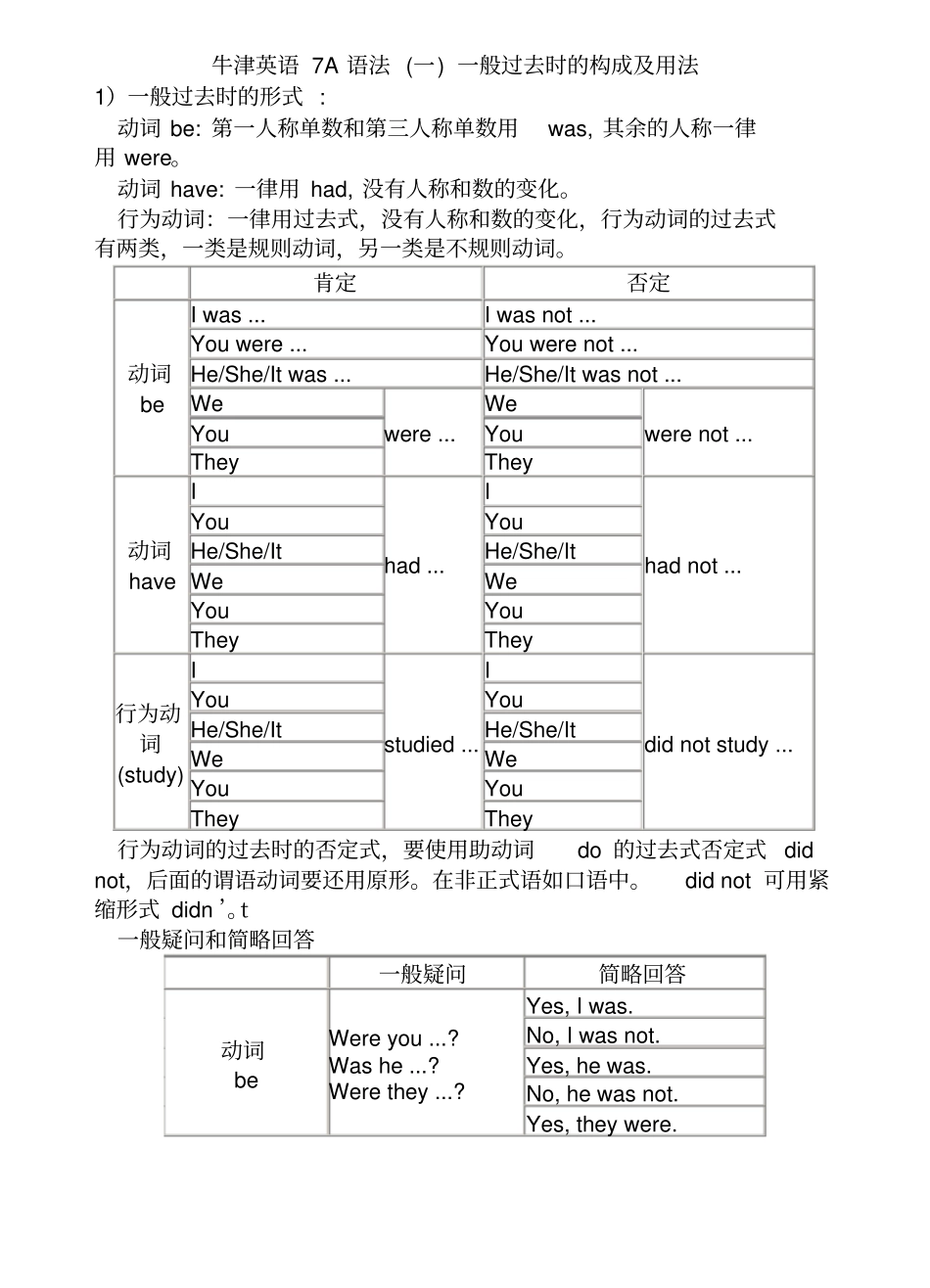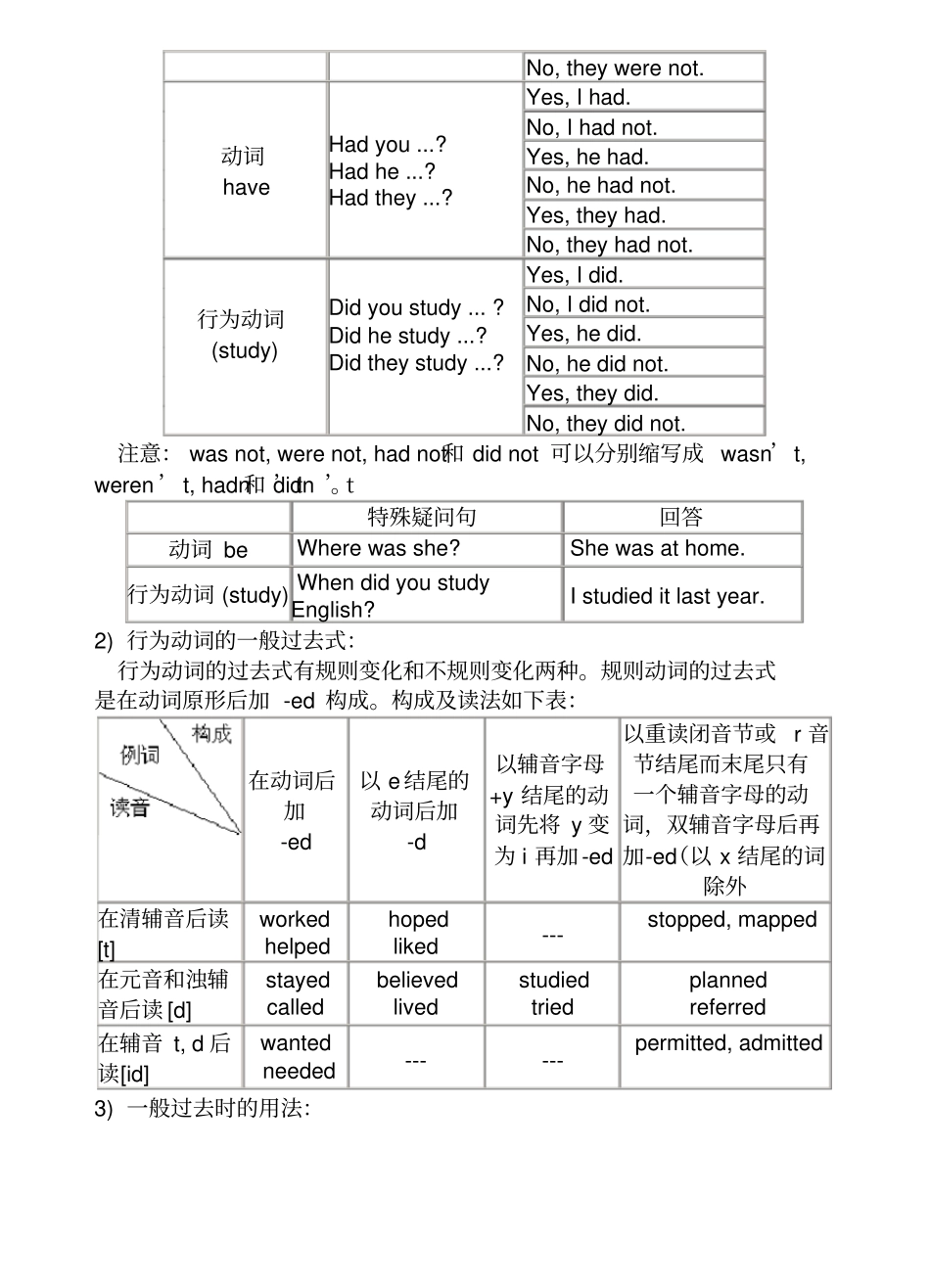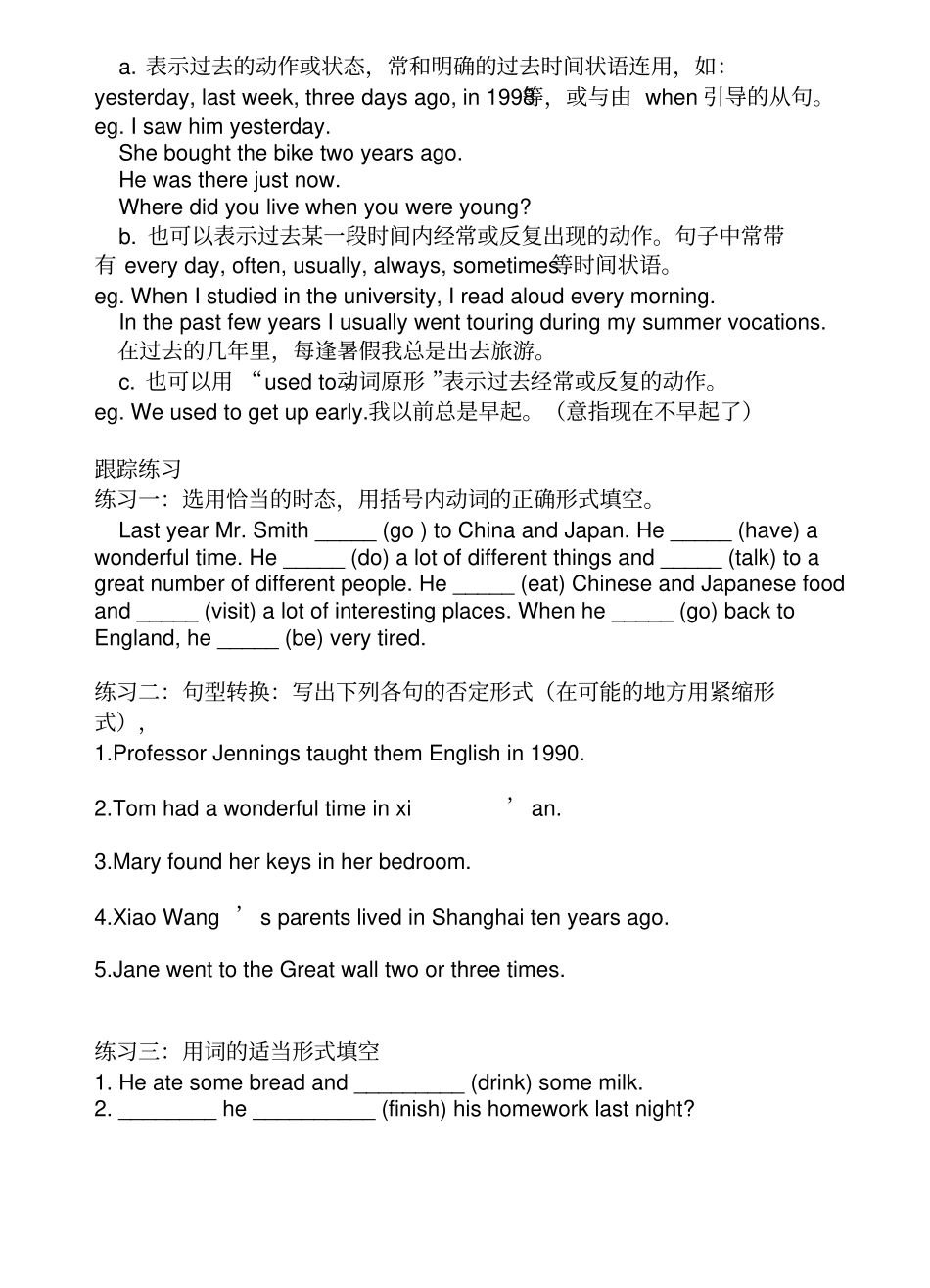牛津英语 7A 语法 (一) 一般过去时的构成及用法1)一般过去时的形式 :动词 be: 第一人称单数和第三人称单数用 was, 其余的人称一律用 were。动词 have: 一律用 had, 没有人称和数的变化。行为动词:一律用过去式,没有人称和数的变化,行为动词的过去式有两类,一类是规则动词,另一类是不规则动词。肯定否定动词be I was ... I was not ... You were ... You were not ... He/She/It was ... He/She/It was not ... We were ... We were not ... You You They They 动词have I had ... I had not ... You You He/She/It He/She/It We We You You They They 行为动词(study) I studied ... I did not study ... You You He/She/It He/She/It We We You You They They 行为动词的过去时的否定式,要使用助动词do 的过去式否定式 did not,后面的谓语动词要还用原形。在非正式语如口语中。did not 可用紧缩形式 didn ’t。一般疑问和简略回答一般疑问简略回答动词be Were you ...? Was he ...? Were they ...? Yes, I was. No, I was not. Yes, he was. No, he was not. Yes, they were. No, they were not. 动词have Had you ...? Had he ...? Had they ...? Yes, I had. No, I had not. Yes, he had. No, he had not. Yes, they had. No, they had not. 行为动词(study) Did you study ... ? Did he study ...? Did they study ...? Yes, I did. No, I did not. Yes, he did. No, he did not. Yes, they did. No, they did not. 注意: was not, were not, had not 和 did not 可以分别缩写成 wasn’t, weren ’t, hadn’t和 didn ’t。特殊疑问句回答动词 be Where was she? She was at home. 行为动词 (study) When did you study English? I studied it last year. 2) 行为动词的一般过去式:行为动词的过去式有规则变化和不规则变化两种。规则动词的过去式是在动词原形后加 -ed 构成。构成及读法如下表:在动词后加-ed 以 e 结尾的动词后加-d 以辅音字母+y 结尾的动词先将 y 变为 i 再加-ed 以重读闭音节或r 音节结尾而末尾只有一个辅音字母的动词,双辅音字母后再加-ed(以 x 结尾的...


